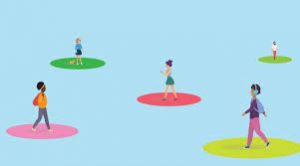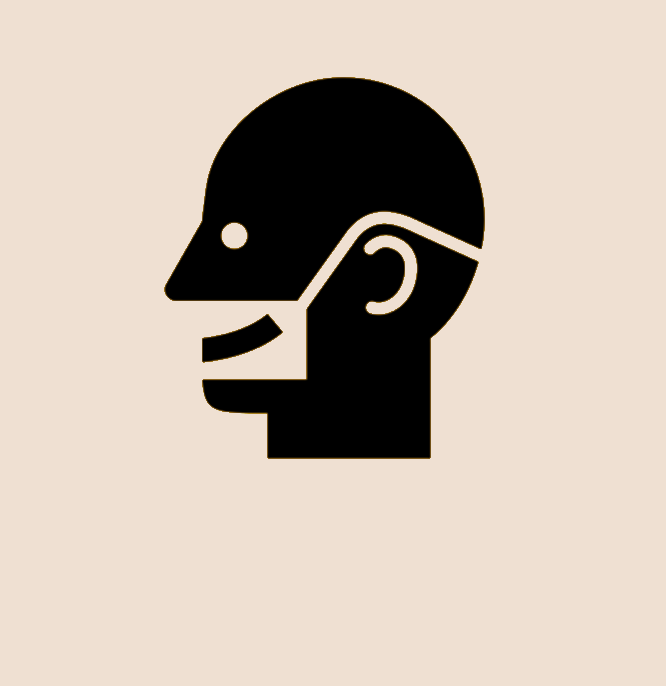by Sarah Hautzinger
I didn’t expect to be the only person wearing a mask on that early-May Saturday morning when I returned to a social dance group I frequent. I had the impression they were just reopening the doors following the easing of Colorado’s stay-at-home orders; they specified in the message that they had “hooked up another speaker that points outside. So if you would like to dance but still feel conflicted about dancing in the studio with other people, the outside dancing option is available.”
I planned not to go, as for the six weeks since distancing began in earnest, I’d instead been hiking with a friend from the group (who’s in his seventies, a very recent cancer survivor, and who’d been distancing “except for dance” when I intervened and asked him to come meet me instead). But I found I couldn’t resist seeing how it was managed. If André Lepecki has called choreopolitics “the choreography of protest, or even simply the freedom to move freely,” (Kedhar 2014), perhaps what I was interested in was more like “choreosociality.” How would the group, a dance group, after all, orchestrate our bodies in space in a way that would balance our draw to dance together – in an open-format way that need not involve touching or proximity, though it often did – and our need to keep ourselves and the broader population virus-free and healthy? Would we mostly all remain outside, and at six-foot spacing? Would we do spaced-out opening and closing circles?
As I approached, someone was in the entry-way, arranging the speaker wires, so I waited outside. But no one else was waiting outside, so when the entry opened up, I went inside. Most of the dozen-or-so people were standing about spaced, but again, I wore the only mask. Someone asked a new arrival, “Where are you with hugs?” and the person said, “Okay”; those two hugged, and someone else also hugged the new arrival.
People gathered for the opening circle; I was surprised that I was the only one not to take others hands (save the newest arrival off to the side, who didn’t join the circle either way). I stood some eight feet back with my arms extended and mask up, explaining that although I wasn’t feeling super cautious, personally, I would be meeting our shared friend later, and also was trying to uphold what my family’s agreed to. They included me in the circle, holding two hands on either end out toward me; someone mentioned they were “putting” our friend “into the circle,” too.
I danced outside, mostly, alone, but occasionally danced a bit inside, too. Someone else came late with a bandana around her face. I left early, deep in my thoughts and not waiting for the closing circle.
As the sole mask wearer, and sole non-hand-taker, I wondered how my embodied symbolism had been read by others. To me, it meant: I could be an asymptomatic carrier, and this simple cloth mask potentially protects you from me (but does little or nothing to protect me, as I understand). I’m taking precautions, for collective good. For what it’s worth, I didn’t and don’t feel fearful for myself (which reflects a degree of security and privilege I wish more had right now, without doubt).
I wondered, though, if for some others there, my mask may have said: I’m afraid. For myself. I don’t want to be close to your or breath your breath or touch your hands or hug you because, I’m afraid. That’s very different from what it meant for me.
By contrast, perhaps for some it also said: I am not allowing you into my intimate, or personal, physical sphere (Hall 1969) just now—even though many of you are admitting one another. That message, I think, was mutually recognizable, and accurate, but also likely mapped differently onto varied takes about the seriousness of the pandemic situation and personal risk assessments within it.
Misrecognition around what masks mean and are for comes up across our fieldwork material. Many of our cases, divergent understandings and sensibilities about the rules themselves–e.g. the many inconsistencies seen in stores, service-oriented businesses (Destiny Rhoades), and other public places (see Audrey Colgin’s and Olivia Hahnemann-Gilber’s essays). Team member Thad Allen offered what I find the most hilarious and indecipherable use of a “mask”: he observed an “an elderly white woman [who]…was wearing a black hair scrunchy around her head parallel to the ground, like you would a mask.” What on earth could that have meant to her? Utter ignorance about the purpose masking should serve? Or, making a parody of the requirement out of resistance to it in principle, or perhaps just because she had no mask and it was, or felt, required?
In a different vein, team member Elijah Thornberg wrote about masks covering smiles for our project in a form I found reminiscent of a poem,
“I can’t smile at people with a mask on.”
I interact with people outside of my home every couple days, when I go into town to the post office and the grocery/general store.
I find it SO disconcerting that I can’t visibly smile at people while I have a mask on. Only in losing the ability did I realize that I use various smiles to mean a huge variety of things, like:
“Hi”
“It’s beautiful today”
“Thank you” “Please, go ahead”
“Take your time” “I think your dog is cute” “I think your baby is cute”
“I think you are cute”
“I respect you / your age / your authority”
“Your difference (ability, language, weight, appearance, etc) does not make me uncomfortable”
“Please, let me offer you assistance”
“I am nonthreatening and mean you no harm”
“You can trust me” “I trust you”
Etc.
Elsewhere, writing as a trans-masculine person, Elijah connected wearing a mask to raising the likelihood of being misgendered, underlining still more starkly the work those smiles would normally perform for him to avoid misrecognition.
For Pierre Bourdieu, misrecognition refers to something (an everyday gesture, action, interaction or process) not being for what it is, because it was not previously understood within the social field and the habitus of those encountering it (Bourdieu 2000). Instead the thing is attributed to another available realm of meaning, set of values, or social field. How masks operate as symbols (in addition to being practical tools) during COVID-19 presents ample room for misrecognition in this sense. This seems especially true when those resisting public health precautions like masking link this opposition to resentment about state control in other areas, such as gun rights, business practices, and many other politicized discourses.
References Cited
Bourdieu, Pierre. 2000. Pascalian Meditations. (R. Nice, Trans.). Cambridge: Polity Press.
Hall, Edward T. 1969. “Distances in Man.” In The Hidden Dimension, 113-129. Garden City, NY: Anchor Books.
Kedhar, Anusha. 2014. “Hands Up! Don’t Shoot!”: Gesture, Choreography, and Protest in Ferguson. The Feminist Wire. http://www.thefeministwire.com/2014/10/protest-in-ferguson/


Hi, we welcome comments, additions, interventions, sharing, ranting, likes, etc.
This piece on masks brought out so many of the confusing, uncertain, and ambiguous spaces we find ourselves in now. Should we or should we not mask and if we do, when and where and how? What does wearing a mask signal and communicate? Our usual modes of interpretation so often fail us now, or even worse, leave us just wondering.